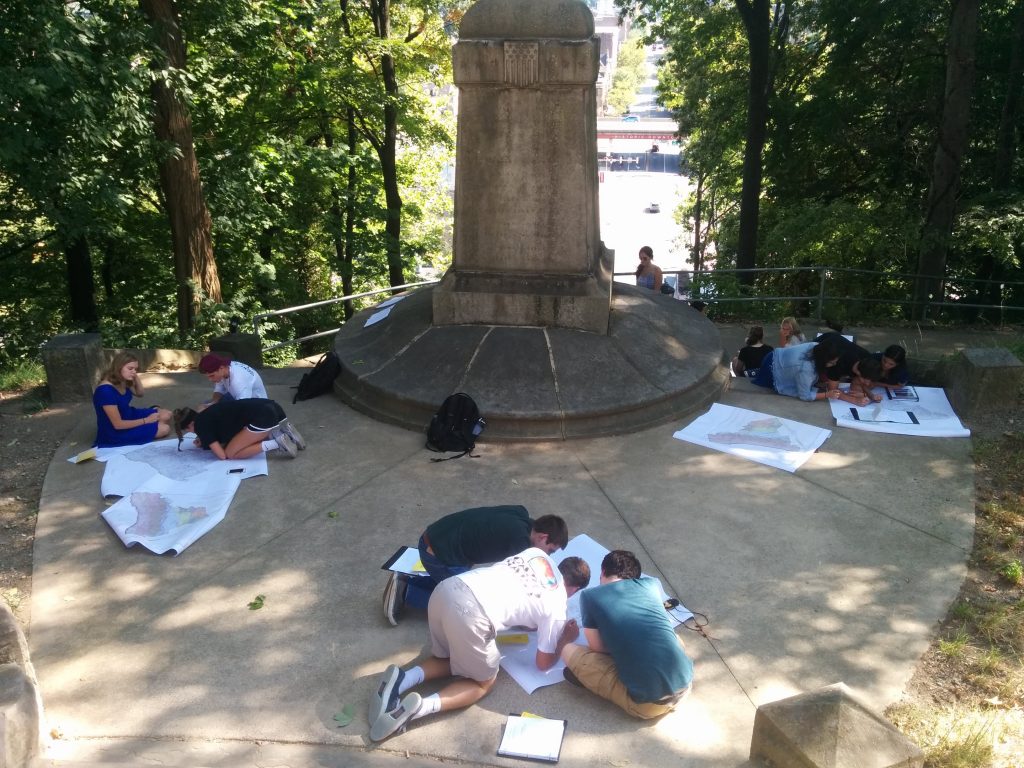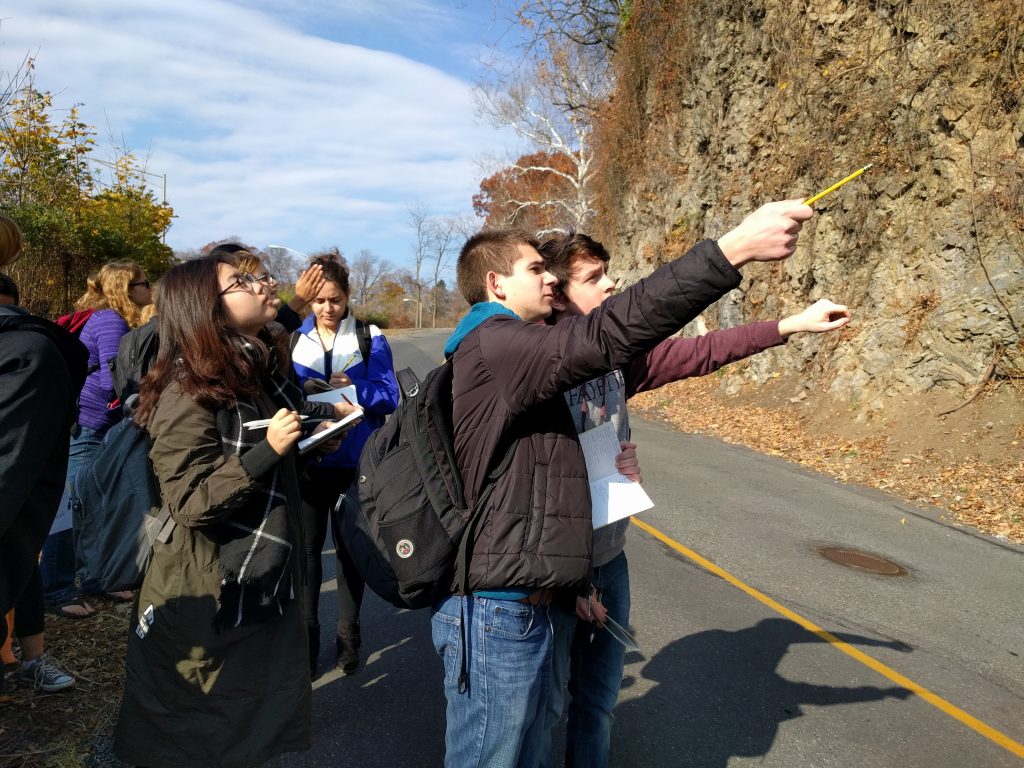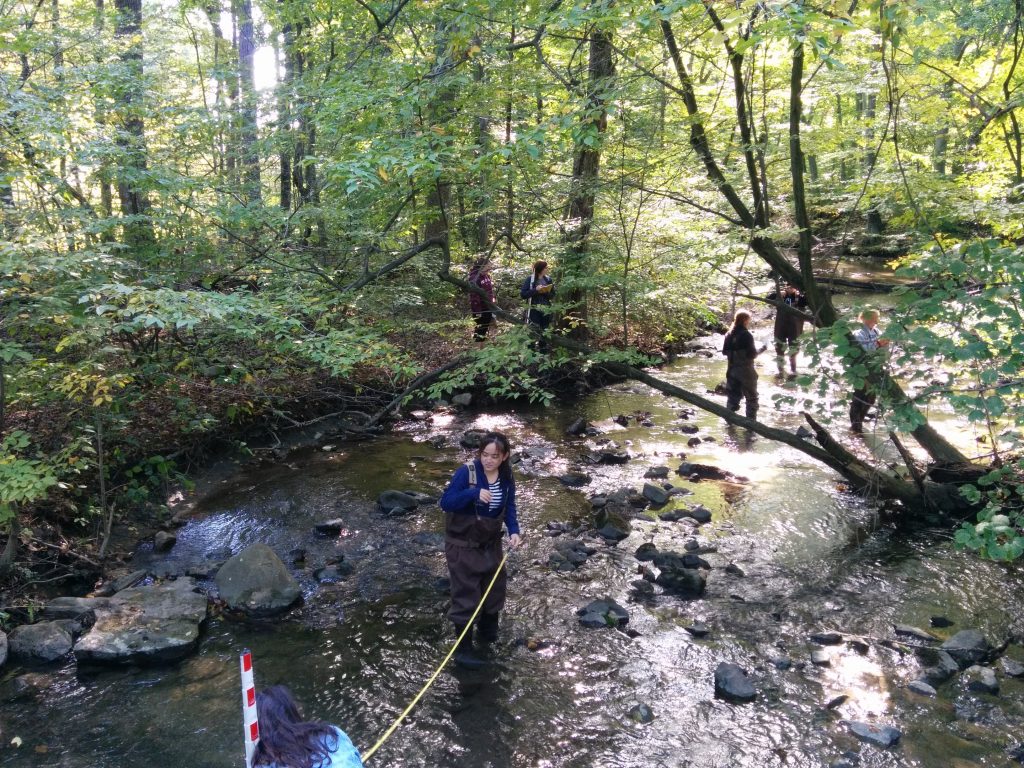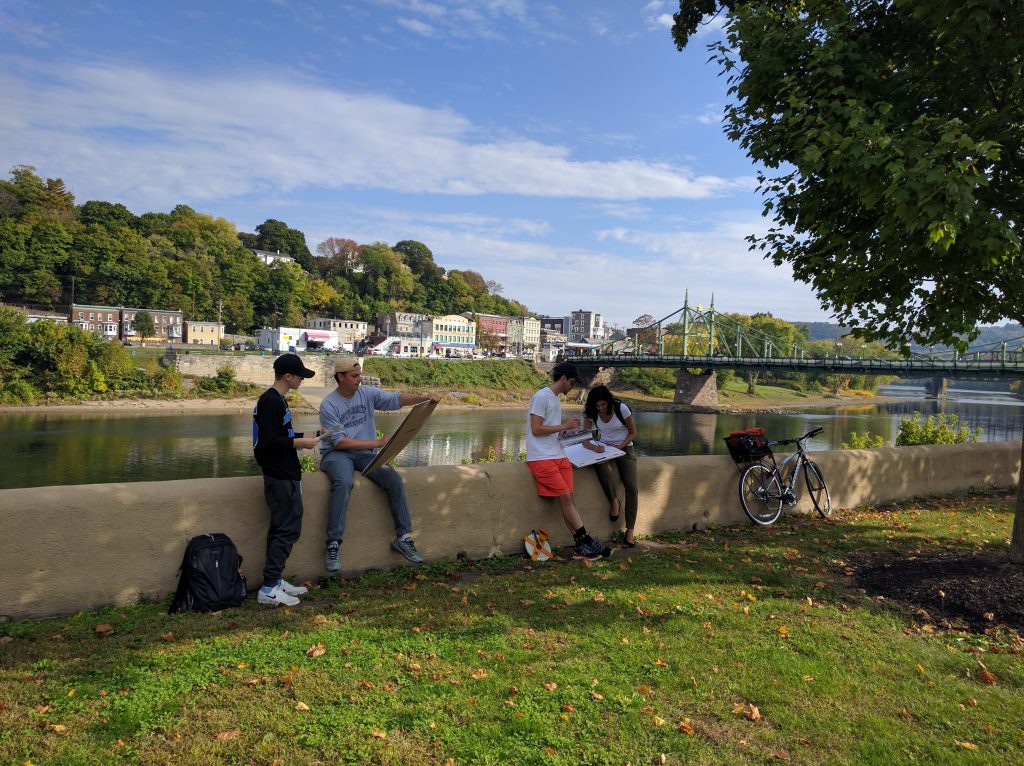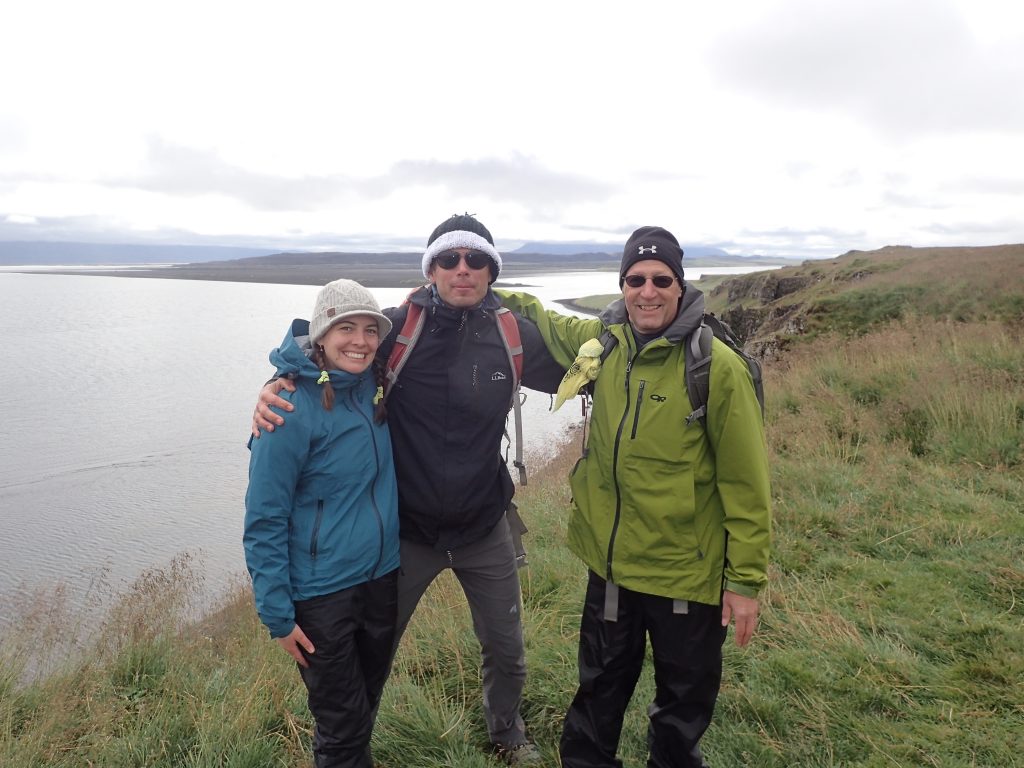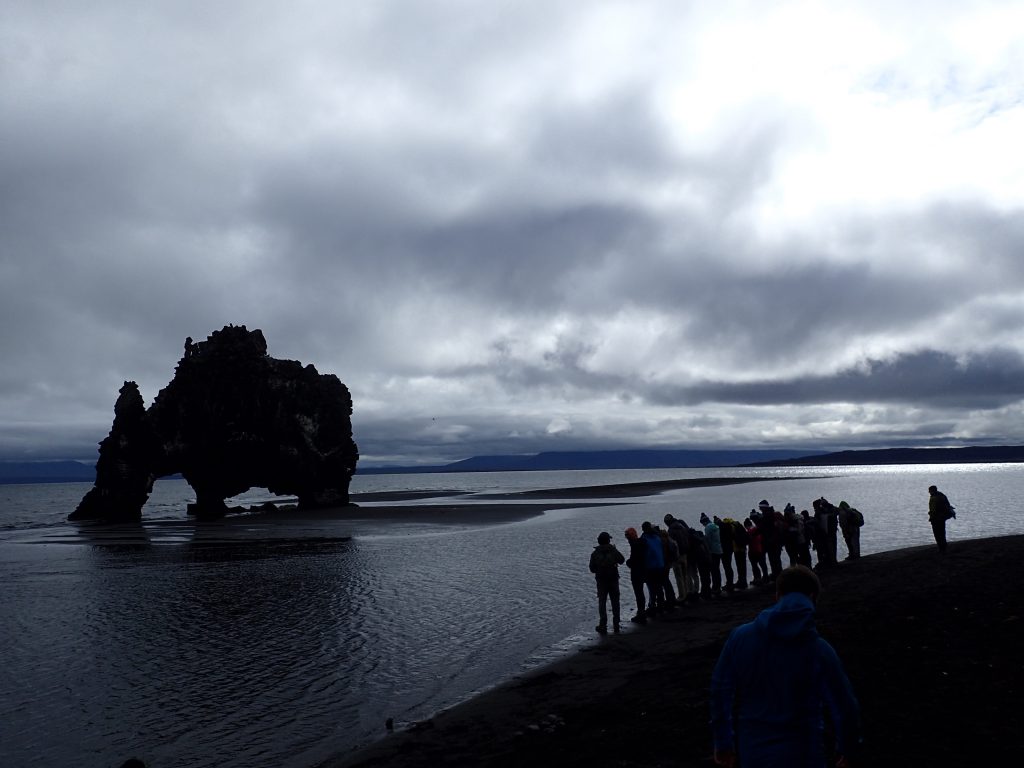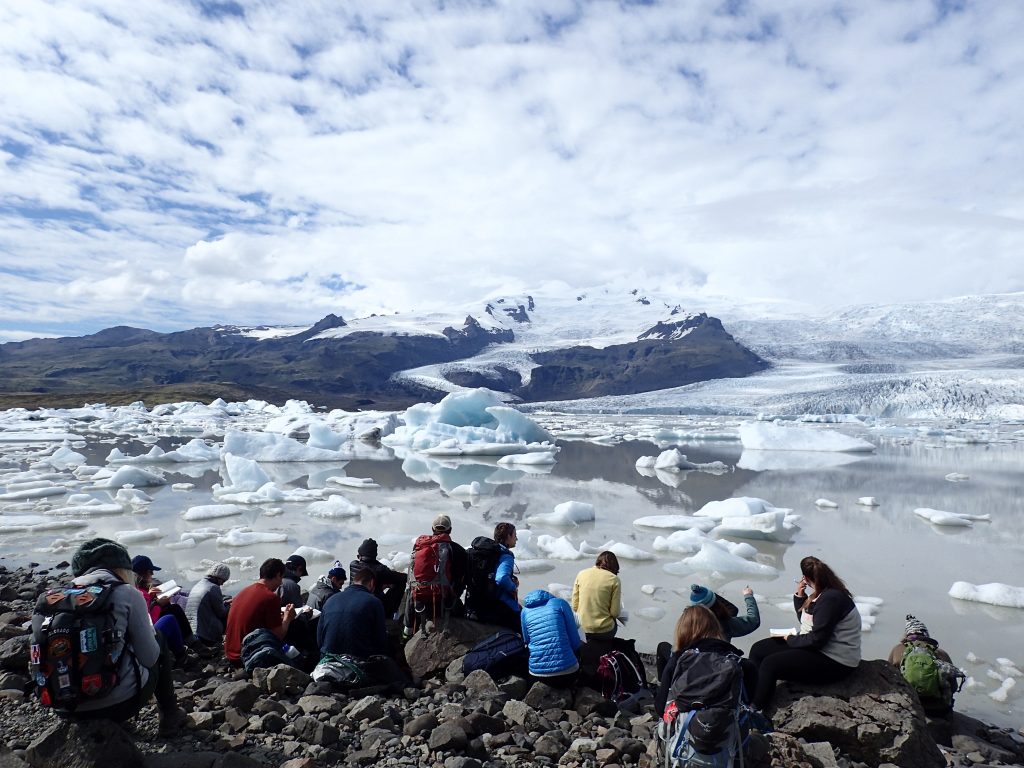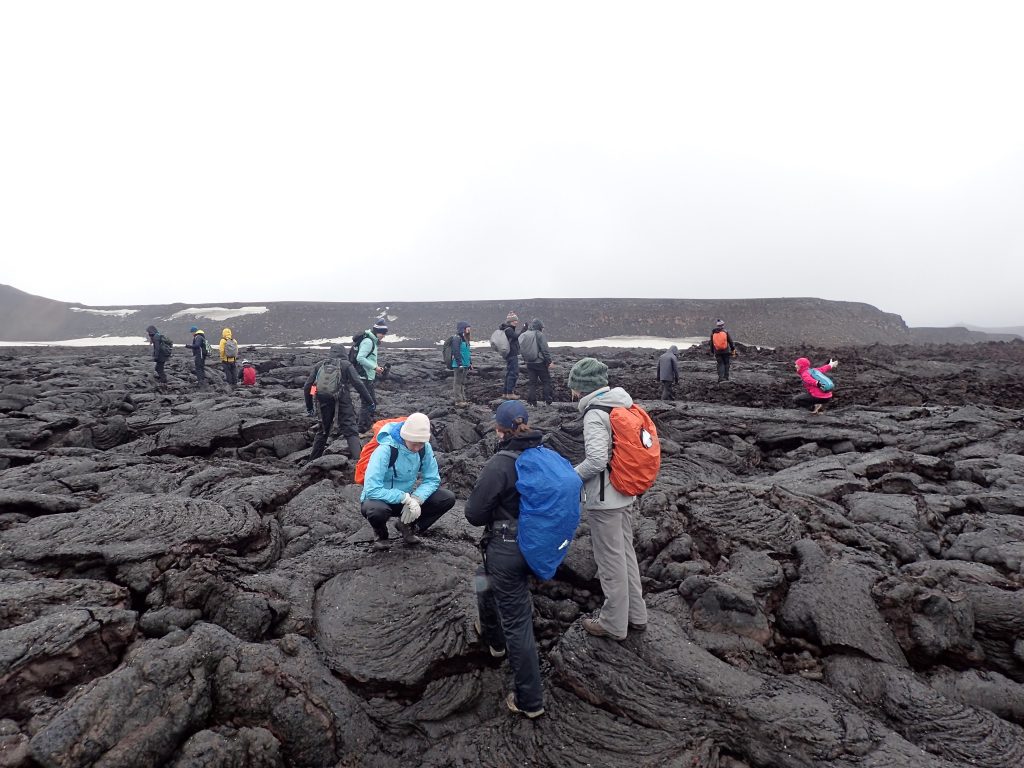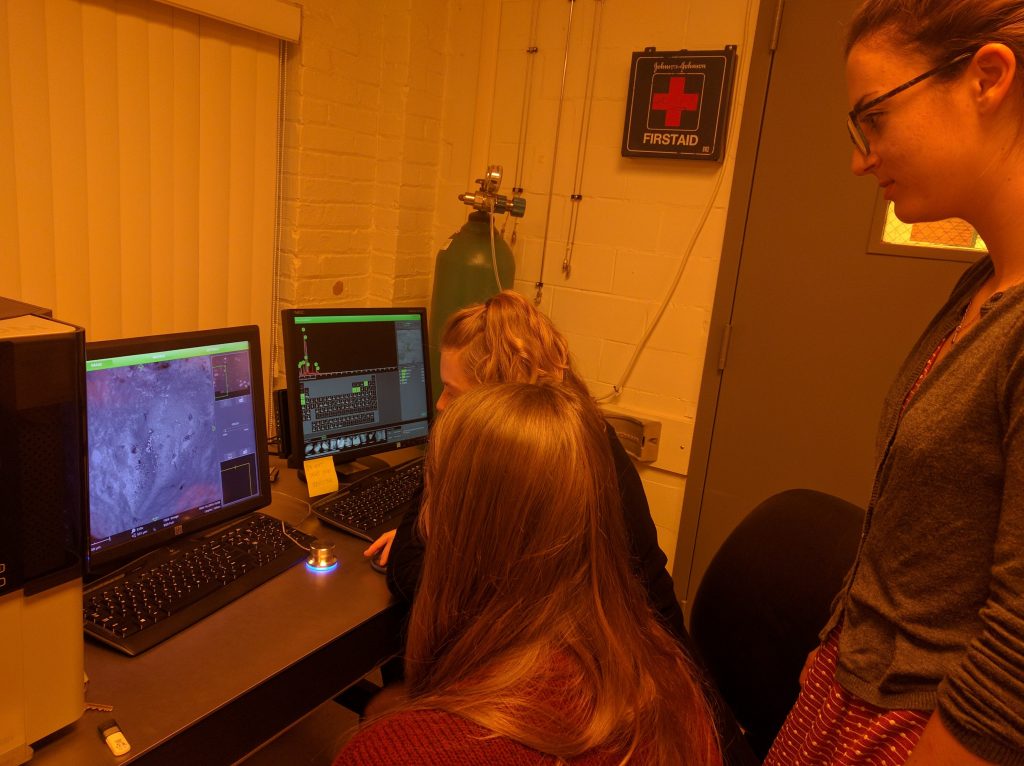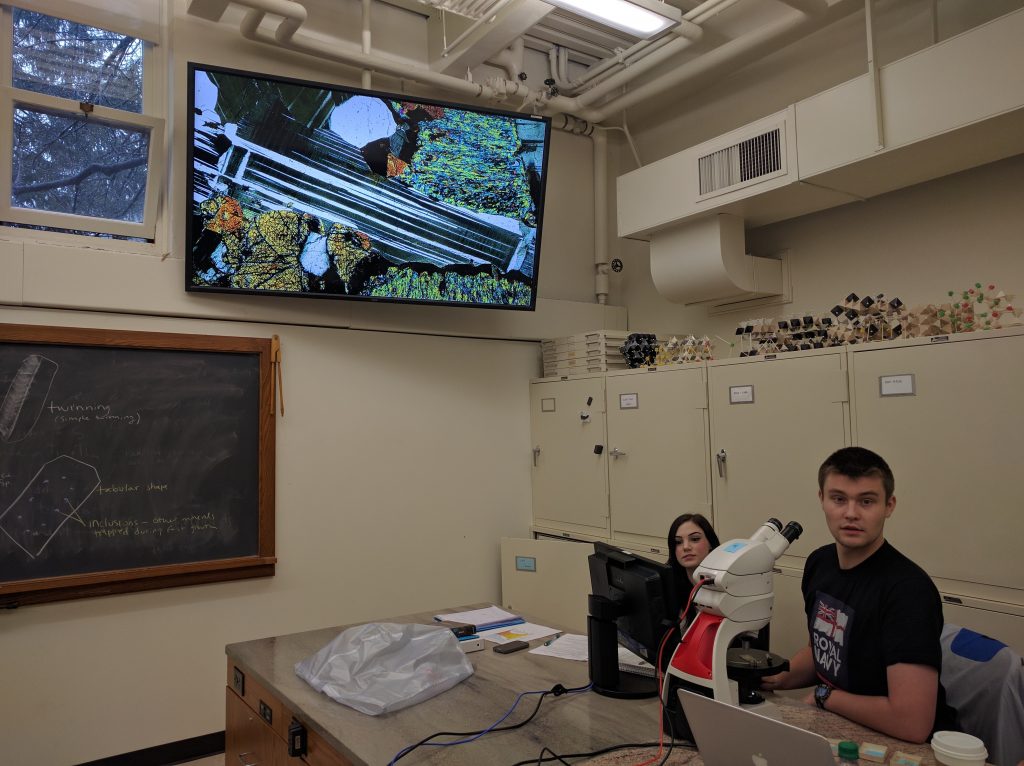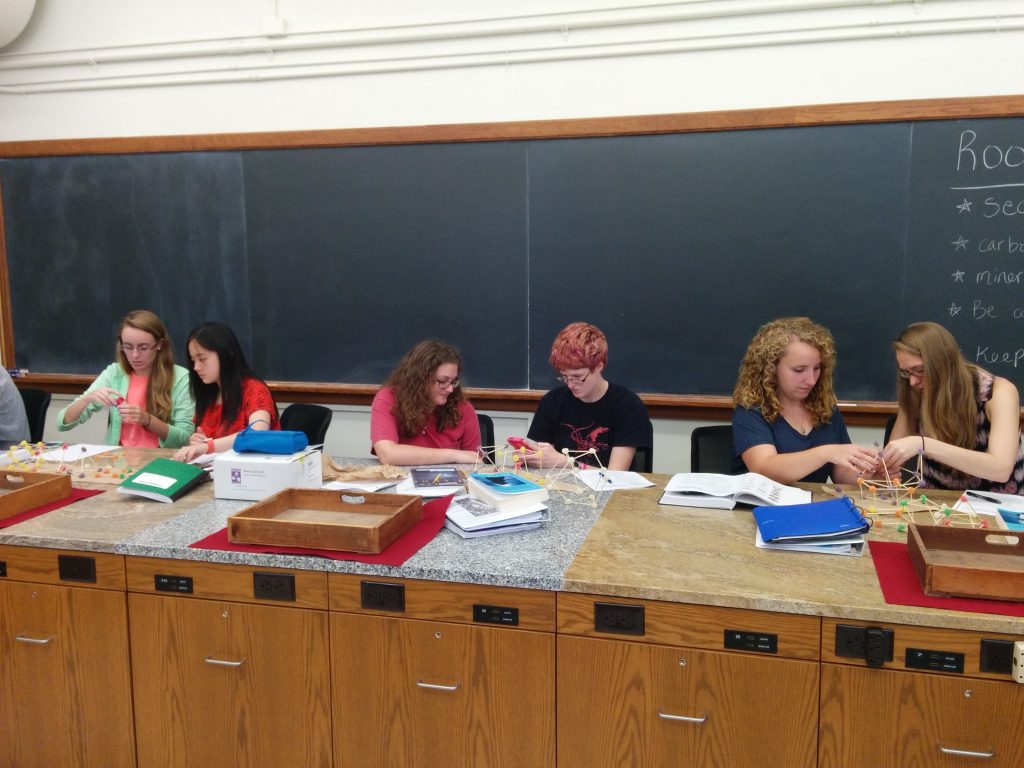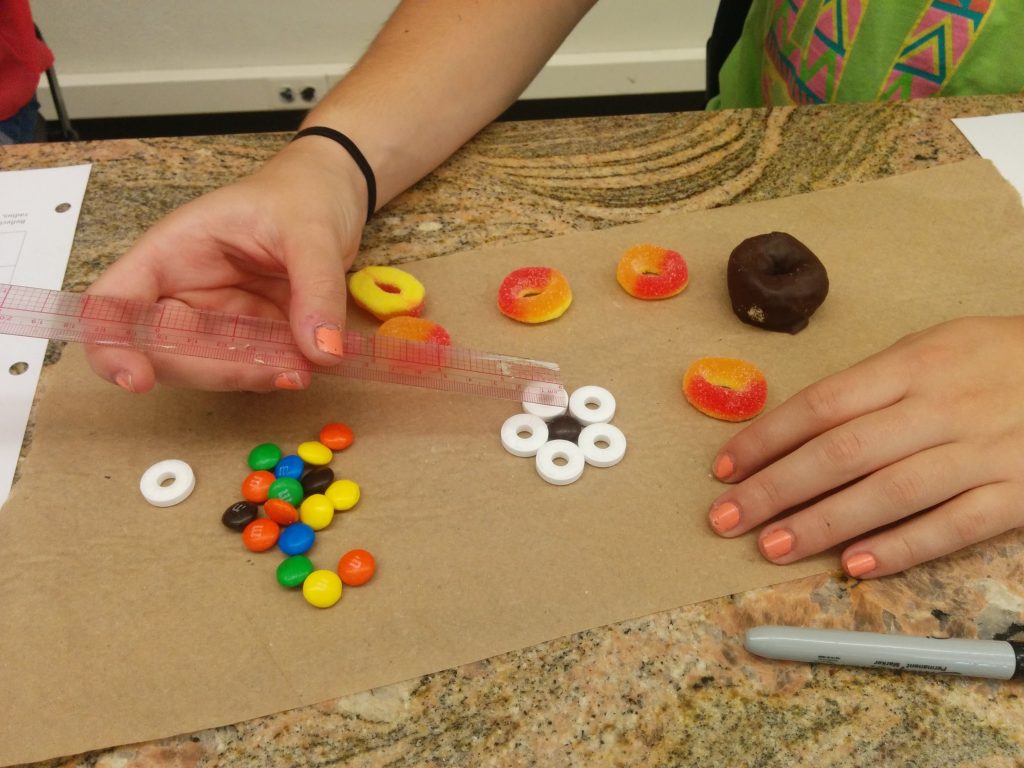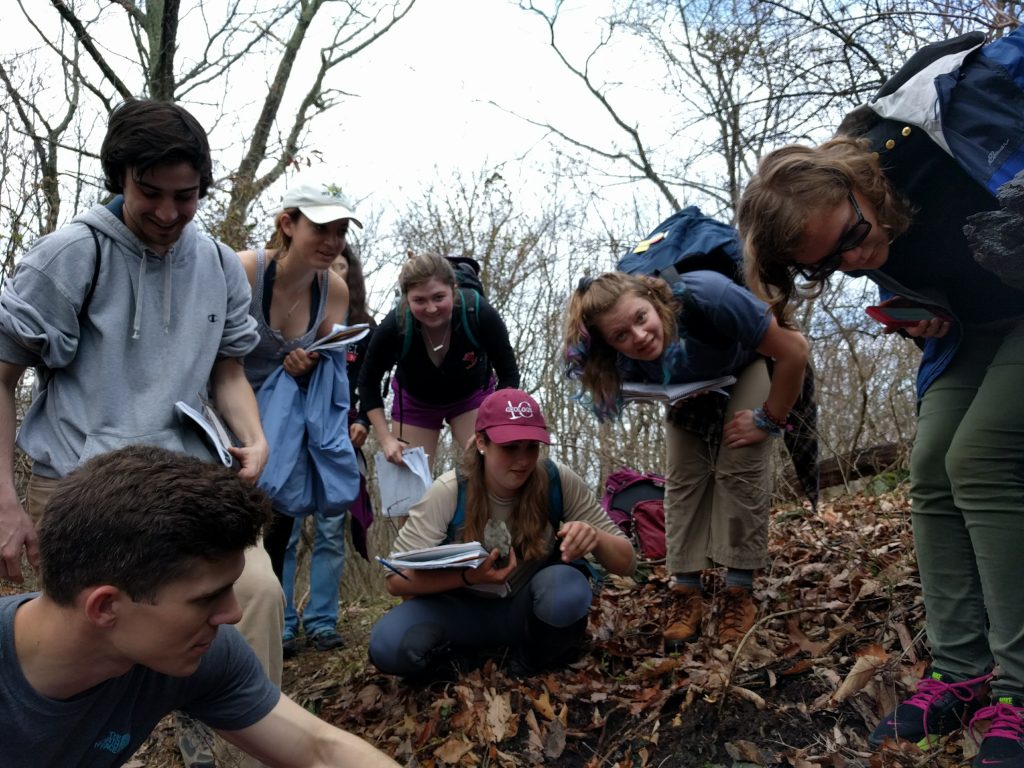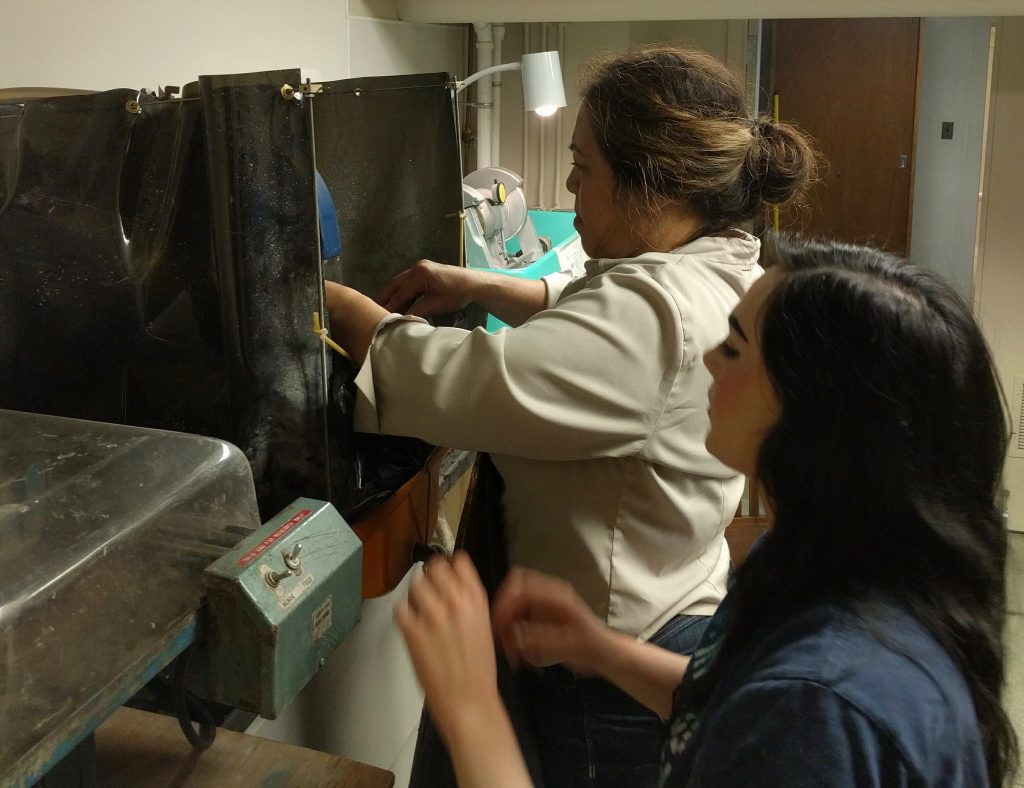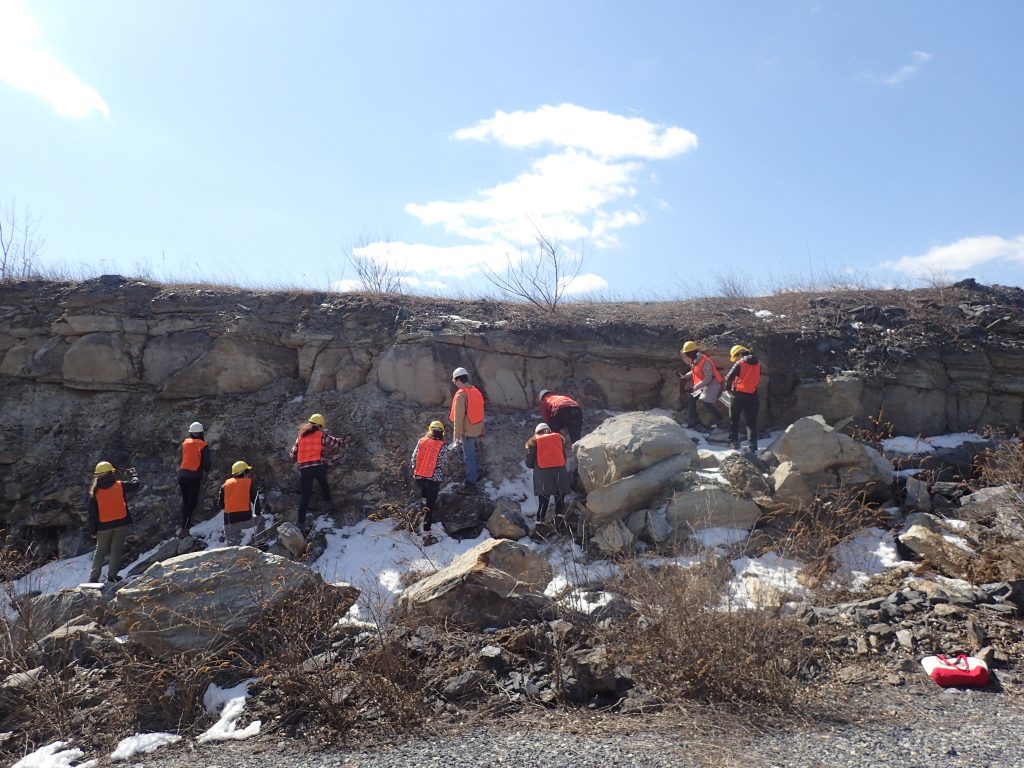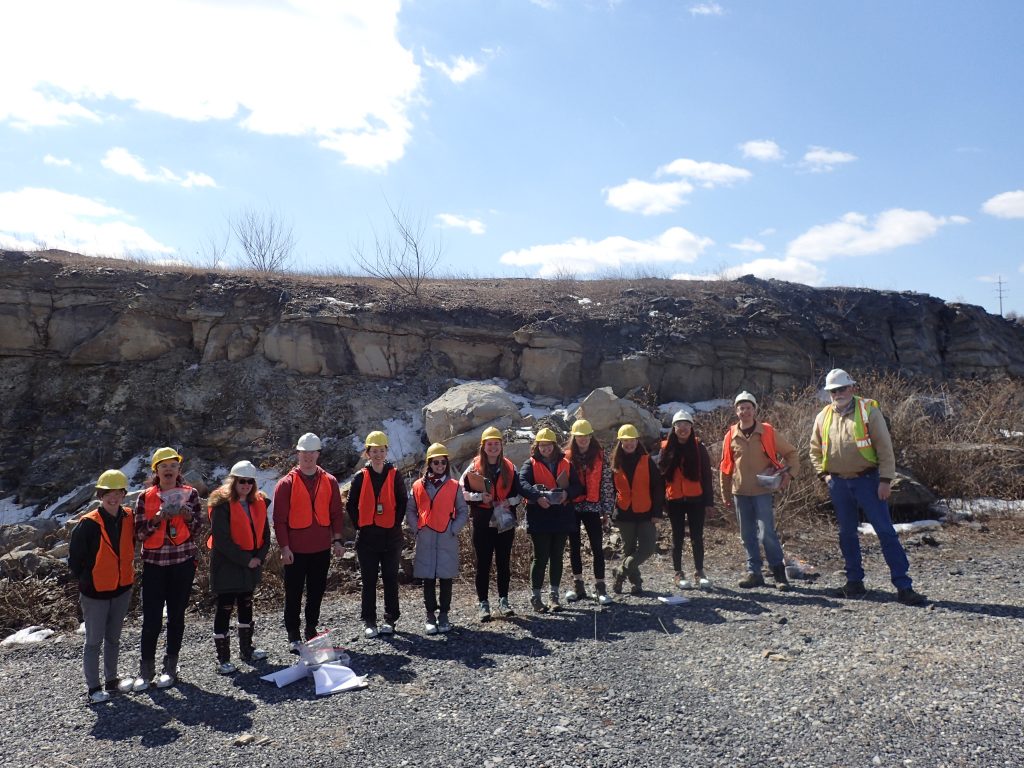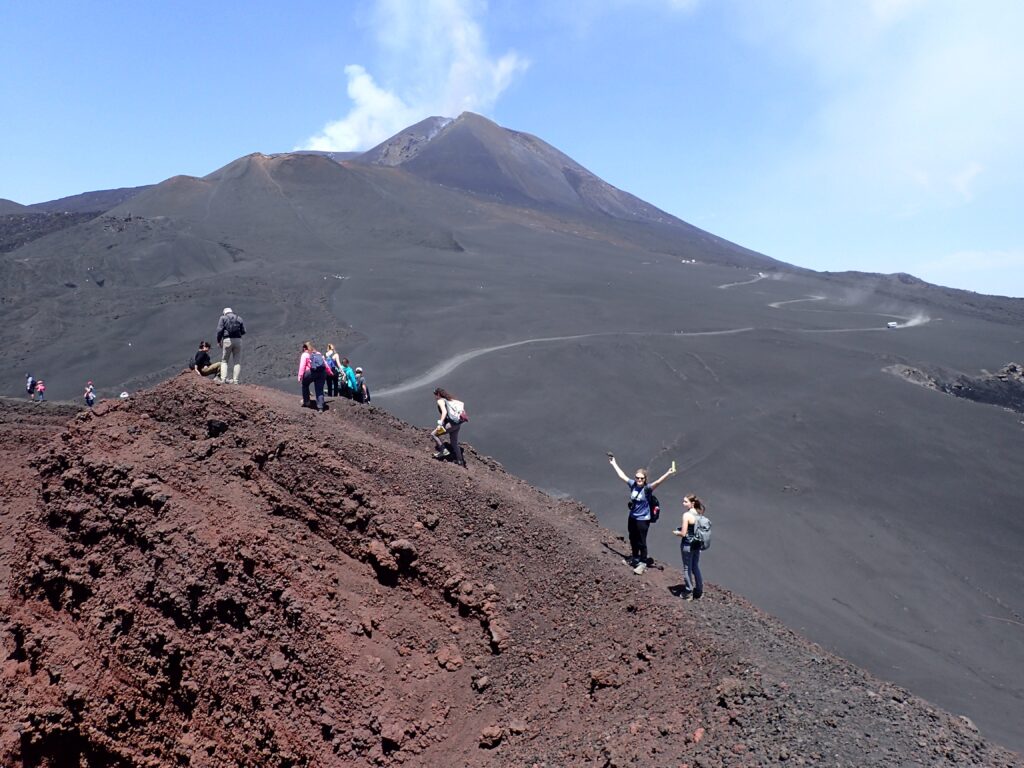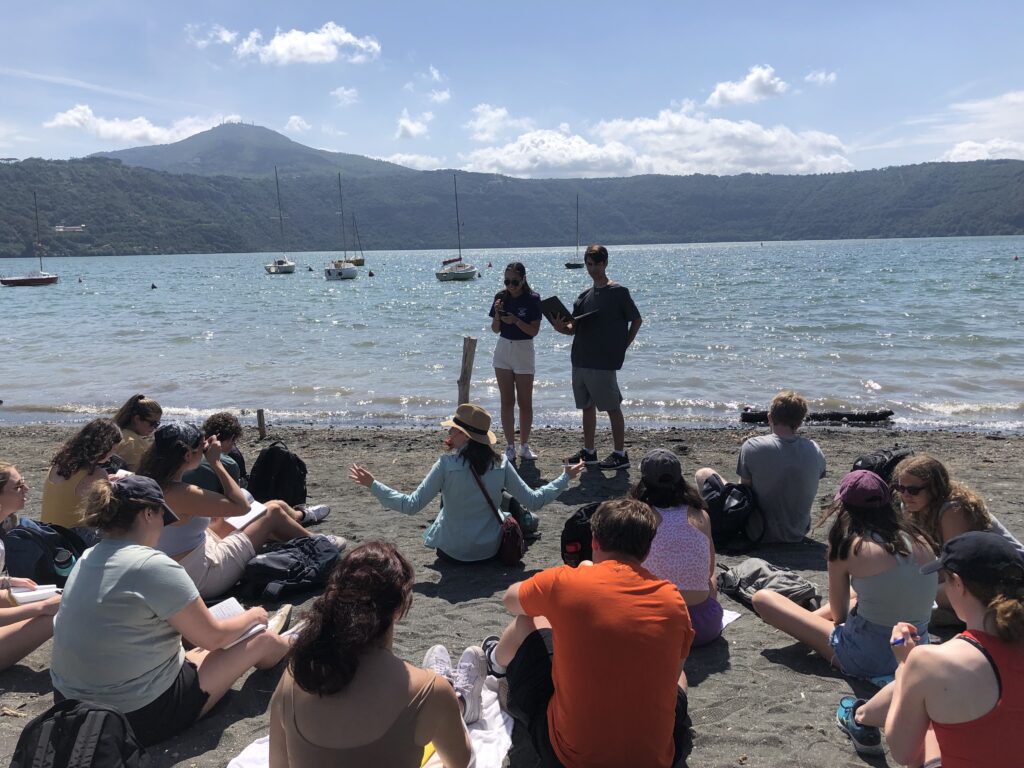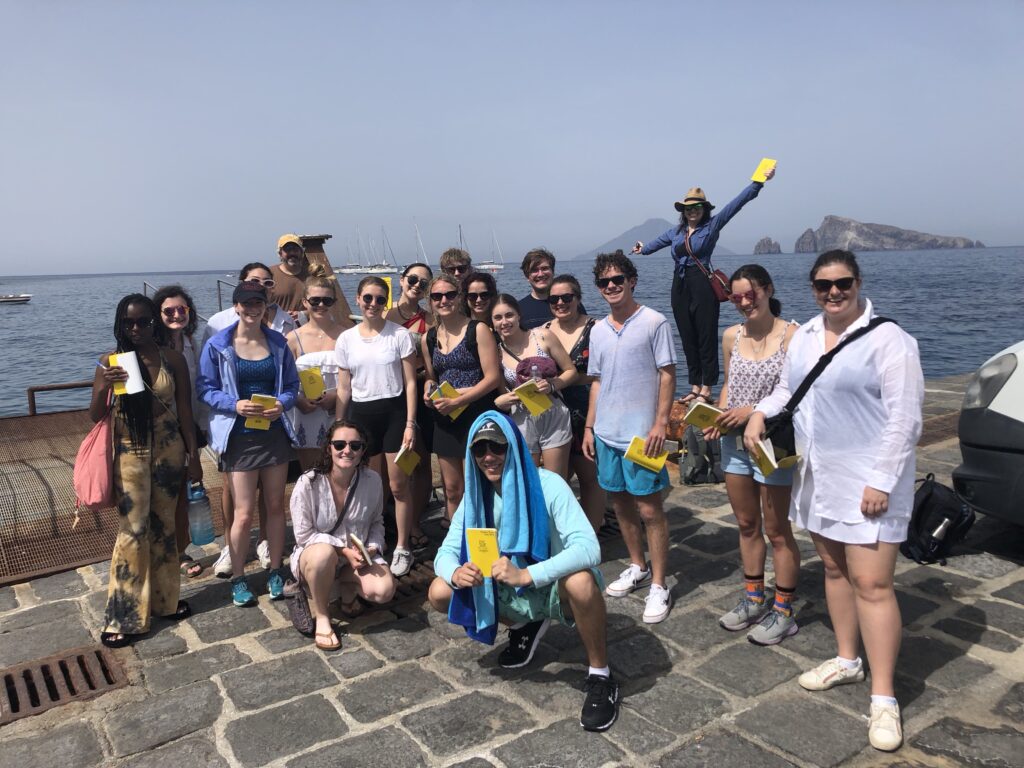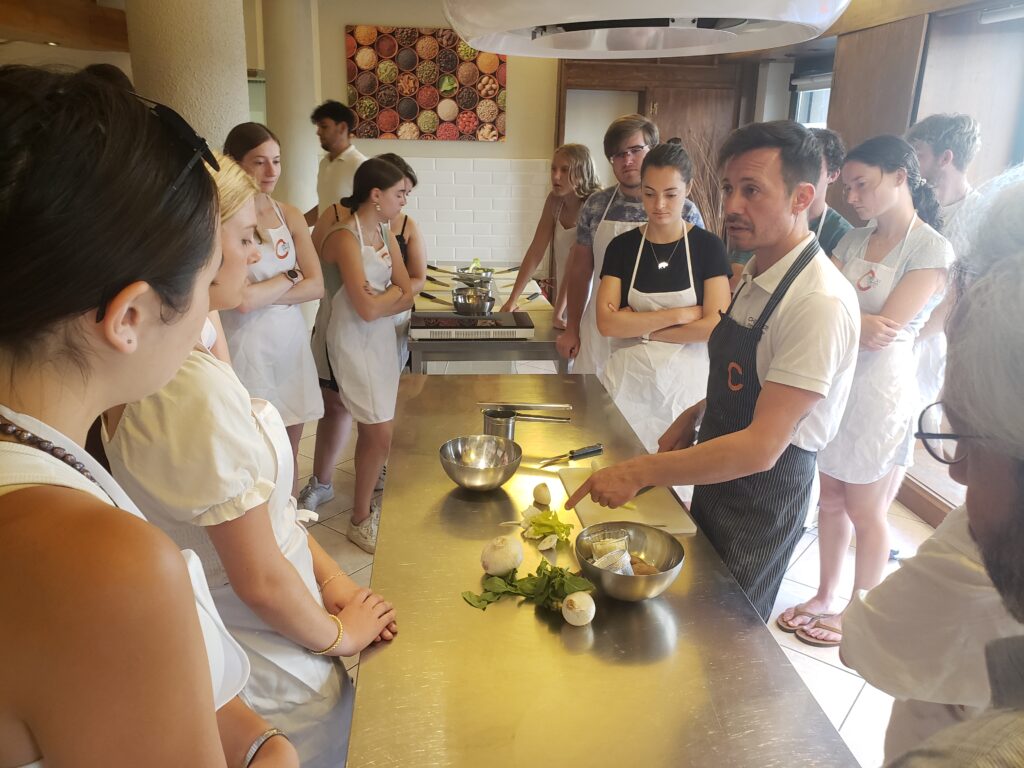Geology 100:
From Fire to Ice–An Intro to Geology
- Reading topographic maps and learning about the local landscape (2016)
- Discussing original horizontality and superposition at an on-campus outcrop (2016)
- Measuring stream properties in an upstream-downstream comparison of Bushkill Creek (2015)
- Mapping historical floodwater heights and extents in downton Easton, PA (2016)
“A broad introduction to the geological processes acting within the earth and on its surface that produce volcanoes, earthquakes, mountain belts, mineral deposits, and ocean basins. The course considers the dramatic effects of plate tectonics, the enormous periods of time over which geologic processes take place, and the familiar features of the landscape formed by landslides, rivers, groundwater, and glaciers. Practical aspects are learned through discovery-oriented laboratory exercises, which include several field excursions. Lecture/laboratory. Preference to first- and second-year students, geology majors, and environmental science minors. {Phys}” (description from Lafayette Geology)
Geology 180:
Iceland: Geology & Natural History of a Young Island
- Course instructors Tamara Carley, Dave Sunderlin, and Larry Malinconico in Iceland (2017)
- Coastal studies at Hvitserkur, north Iceland (2017)
- Overlooking the glacial lagoon at Jokulsarlon in southeastern Iceland (2017)
- Exploring lava flow features at Askja (2017)
“Iceland is a geologically new and unique island. The dynamic glacial environments, sub-polar climate, and thunderous river systems of the country sit atop an active volcanic system on a divergent plate boundary. This intensive field course explores the geological processes that shape the island’s landscape and the climate and life of a sub-polar biome. The course also addresses aspects of Iceland’s human ecology from its early settlement to modern issues of energy, agriculture, and sustainability.” (description from Lafayette Geology)
Geology 200:
Earth and Planetary Materials
- Characterizing mineral properties using the SEM (2016)
- Live-projecting petrographic microscope views (2015)
- Building crystal models (2015)
- Exploring coordination numbers (2016)
“Introduction to the crystallographic, structural, and chemical characteristics of rock-forming minerals and consideration of the processes and variables that control mineral formation. Igneous, metamorphic, hydrothermal, and sedimentary environments in which common minerals form. X-ray powder diffraction techniques used to identify earth materials and to determine unit-cell dimensions. Laboratory includes discovery-oriented exercises in X-ray diffraction, mineral identification, and crystallography, as well as high-temperature experiments in phase equilibria. Lecture/laboratory. Prerequisite: Any 100-level geology course and elementary chemistry, or permission of instructor.” (description from Lafayette Geology)
Geology 307:
Igneous and Metamorphic Petrology
- Examining a welded tuff at a local outcrop in Philipsburg, NJ (2017)
- Cutting rocks and preparing thin sections (2017)
An examination of igneous and metamorphic rocks as records of the crustal evolution of the earth. The origins and existence of these rocks are examined in view of chemical phase equilibria and igneous and metamorphic processes. Laboratory work emphasizes the identification and classification of igneous and metamorphic rocks using hand samples, thin section identification, X-ray powder diffraction, analytical techniques, and field relationships. Prerequisite: Geology 200.” (description from Lafayette Geology)
Geology 321:
Geochemistry
- Students investigate volcanic ash (now bentonite) exposed in a local quarry (2019).
- Students with bentonite samples for their semester-long source-to-sink project (2019).
“An introduction to the chemical and thermodynamic principles and processes that control geological phenomena both at the earth’s surface and deep within the earth. Consideration of solid-earth equilibria (igneous, metamorphic, sedimentary, and weathering reactions), isotope geochemistry oxidation-reduction, natural aqueous solutions, and solid-aqueous equilibria. Lecture/laboratory. Prerequisite: Geology 200 and elementary calculus, or permission of instructor.” (description from Lafayette Geology).
Interdisciplinary Studies 201:
From Plate to Plate
Terroir and the Geology and Agriculture of Food in Italy
INDS 201_From Plate to Plate_Syllabus
- Plate-to-Plate students hiking on Mount Etna as it erupts.
- Students lead a class discussion on the shores of Lake Albano, a short train ride from Rome.
- Plate-to-Plate students on the island of Panarea, preparing to visit Stromboli, seen in the distance.
- Students took an Italian cooking class in Florence while learning about the final plate of “plate-to-plate.”
“Terroir means “the taste of place,” suggesting how foods and drinks are geographically and culturally specific. Its original sense related to wine cultivation, as with Champagne that is only from the Champagne region of France or a Chianti from Chianti, Italy. Food studies theorists have furthered the concept to explain the ways local culture, politics, tradition, and environment shape the identity and meaning of food and farming. This course examines the concept of terroir through a tour of Italy. It takes a full lifecycle approach that begins with the geological basis for farming (subsoil, soil, and fertility), moves on to the practice of agriculture and farming, and ends with an examination of kitchens and tables. Students travel from Sicily and Naples in the South, through Rome, and into the fertile Tuscan region, experiencing active volcanoes, organic farms, food movement organizations, and socially active culinary institutes along the way. The objectives of the course are to examine and understand (a) the concept of terroir, (b) the connections between geology and agriculture, (c) the efforts by healthy food advocates to promote to fair, fresh, and just food, and (d) the ways those three elements play out in modern day Italy. As a GM2 course, the curriculum is threaded through with cross-cultural instruction and comparisons between southern European and North American food and farming cultures, practices, and policies. In brief, students explore the lifecycle of food from tectonic plate to kitchen plate, using Italy as the case study.” (INDS 201 syllabus)
